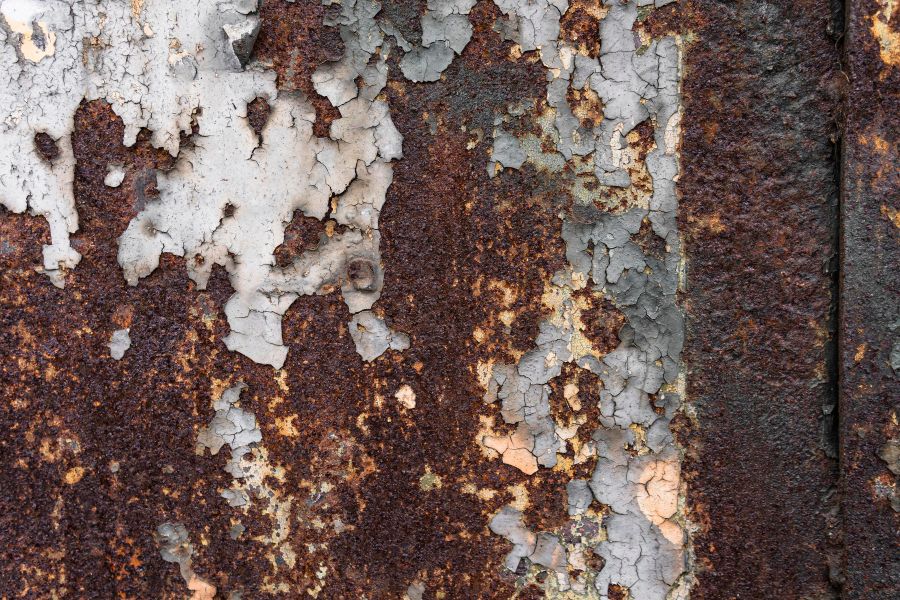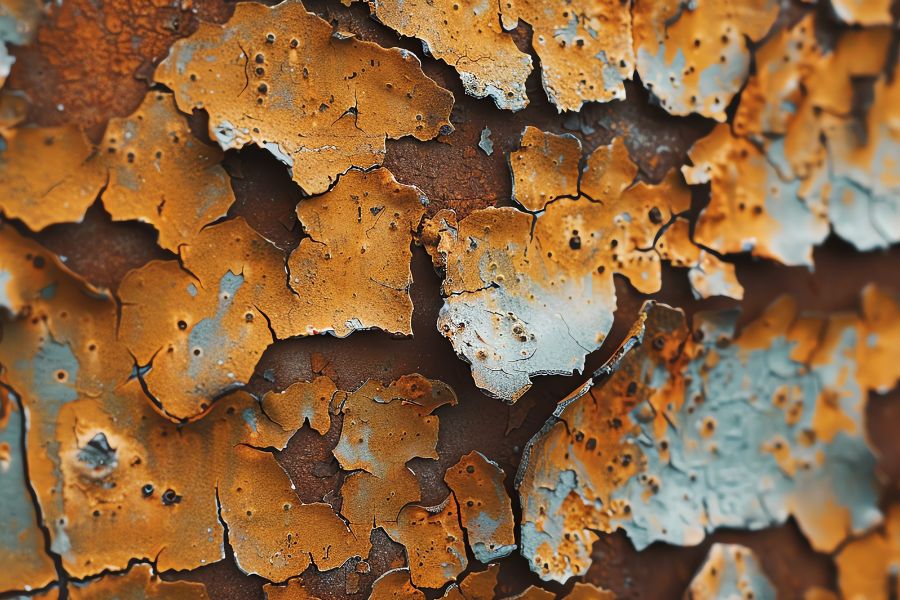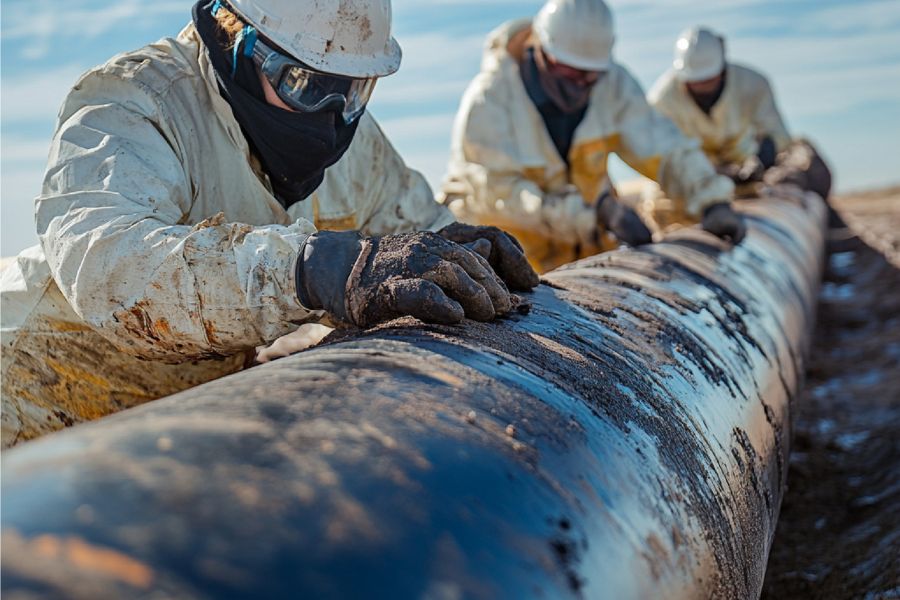Difference Between Corrosion and Rusting: Understanding, Strategies and Methods of Prevention
Knowing the difference between corrosion and rusting is important, mainly in industries where material longevity and structural integrity become critical. Both refer to the deterioration of metals. They differ in scope, causes, and effects, though. This article will discuss the difference between corrosion vs rusting, its causes, effects, and methods of prevention.
Understanding Corrosion
Corrosion can be termed the naturally occurring action or reaction of metals with elements found in the environment, such as oxygen, moisture, and chemicals. It is a very broad, general term that describes the gradual destruction of materials, often metals, through chemical changes. While all materials, polymers, and advanced ceramics are susceptible to corrosion, the most common examples among these are metals.
Some other forms of corrosion include galvanic corrosion, pitting corrosion, crevice corrosion, and intergranular corrosion. Each of these forms of corrosion may occur under different conditions and results in various extents of damage. Galvanic corrosion will, for instance, occur under conditions where two dissimilar metals come into contact in the presence of an electrolyte and result in the deterioration of one of the metals. On the other hand, pitting corrosion leads to the formation of small holes localized over the metal surface, which may cause severe structural damage if prolonged in time.
The causes of corrosion range from mere exposure to adverse environmental conditions to the chemical interaction with pollutants or any other substance. Corrosion can occur in many scenarios of life, namely, in a maritime environment, an industrial setup, and even domestic objects. It results in loss of structure, machinery, and parts costly to repair or replace.
Understanding Rusting
Rusting is a special form of corrosion, which has a place only in the case of iron and its alloys, such as steel. The major difference between corrosion and rusting is that while corrosion might affect a wide range of materials, rusting occurs in metals made of iron. Iron starts its reaction with oxygen and moisture to form iron oxide, which is normally referred to as rust.
Compared to other forms of corrosion, rusting is a somewhat slower process; yet, if allowed to progress without intervention, it is equally destructive. Oxygen and water are needed for the rusting process to begin, which makes humid environments prone to this sort of corrosion. The reddish-brown appearance that signals rust definitely points to rusting and is associated with aged or poorly maintained metal structures.
Rusting basically deals with superficial damage to iron and its alloys, though with long exposure it may find its way into inner layers and weaken the structure, hence making it susceptible to fracture. This may result in considerable structural failure, especially in construction and transportation as well as in manufacturing sectors.
Differences Between Corrosion and Rusting
Differences do exist between corrosion and rusting. First, corrosion is a general term relating to the various processes involved in the degradation of materials, whereas rusting refers only to the oxidation of iron and its alloys. This is very important in establishing the effects it may have on different materials.
The materials affected also vary greatly. While there is a great variety of metals that may undergo corrosion, including non-metallic materials like ceramics and polymers, including aluminium, copper, and zinc, rusting is sustained only among iron-based metals. In other words, though both processes result in some kind of damage, the circle of materials that become victims of corrosion is much greater than in the case of rusting.
The chemical reaction that occurs between corrosion and rusting elaborates on the complexity of the reactions that commonly occur between metals and several factors derived from the environment to give rise to the different types of corrosion. However, rusting is a simple process that involves the reaction of iron with both oxygen and water, yielding iron oxide.
Visually, it also differs in that corrosion can appear as discolouration, pitting, or even a protective oxide layer depending on metal type and environmental conditions. Rusting is easily recognizable by the reddish-brown layer that forms on the surface of iron and steel.
The impact on material integrity takes another course as well. But whereas corrosion may generally deteriorate the different materials, it often eventually deprives the material of its strength, its toughness and ultimately its usefulness. Rusting-again, limited to iron and steel-can very significantly lead to the weakening of the material over a certain period, leading to more fractures and failures.
Methods of Prevention and Protection
Given that both corrosion and rusting are destructive, their prevention and protection become quite vital. While there are general ways through which corrosion may be prevented, rusting is combated through specific techniques.
It will be required to select materials for resisting corrosion in the particular environment that it will be seen in. Examples include the use of stainless steel or aluminium in marine environments to reduce the chance of corrosion. Protective Coatings: Painting, varnish, and galvanization include but are not limited to providing a barrier between the metal and the environment, which will drastically slow down or stop the corrosion process.
The regular maintenance and inspections will highlight the early signs of corrosion and rusting. Their treatments at tender stages can prevent deterioration further and enhance their useful life. Environmental control to reduce the contact of moisture and pollutants with the metal is another effective way to reduce the possibility of corrosion and rusting.
Some of the more specific methods, such as galvanizing in a process of coating iron or steel with a layer of zinc-or applying primers that inhibit rust, can be quite effective. These methods work by creating a protective layer that completely inhibits moisture and oxygen from coming into contact with the metal, hence preventing the formation of rust.
FAQs: Frequently Asked Questions
What is the main difference between corrosion and rusting?
The basic difference between corrosion and rusting is that, while corrosion is a generic term that refers to the deterioration of most classes of materials, including metals, ceramics, and polymers, due to a chemical reaction with components of their environment, rusting refers to the corrosion of iron and its alloys, such as steel, when they react with oxygen and moisture in the presence of other environmental substances to form a compound called iron oxide
Is corrosion aside from metals affecting any other material?
Yes, corrosion does affect materials besides metals. While metals are the most frequent range of occurrence, it can also take place in ceramics, polymers, and others, once these materials undergo a chemical reaction of some sort with environmental factors like moisture, oxygen, or chemicals.
Is rusting more destructive than other forms of corrosion?
While rusting may not be as insidious, it is just as destructive as other forms of corrosion in the sense that given sufficient time, rust can weaken iron and steel structures to such an extent that they may fracture or even fail completely. But it differs in the seriousness of damage according to type of corrosion and material concerned.
Explain how you could differentiate visually between corrosion and rusting.
Corrosion can take many forms such as discoloration, pitting, or even the formation of a protective oxide layer and is dependent upon the type of metal present along with environmental conditions. However, the characteristic reddish-brown layer which forms on the surface of iron and its alloys, means that rusting is fairly easily recognizable.
Why is it important to understand the difference between corrosion and rusting?
Understanding the difference between corrosion and rusting is important in choosing appropriate materials and methods of prevention, especially in industries depending on material longevity and structural integrity. Understanding how materials differ in their resistance to these processes is helpful in taking proper precautions to avoid the deterioration of structures, machinery, and components.
Closing Insights
At CORCON – Institute of Corrosion, we stress how important it is to know the difference between corrosion and rusting in order to protect the integrity of materials and make buildings last longer. Rusting is a type of corrosion that happens to iron and steel. Corrosion is a general term for a process that can damage many materials. It is important to understand these changes in order to use the right prevention methods.
By learning the right skills, like cathodic protection and coating inspection, you can stop materials from breaking down and make sure they last. Taking preventative steps is important to save time, money, and, most importantly, the structural stability of important parts when dealing with corrosion or rusting.
Image Reference: Freepik
Disclaimer: All trademarks, logos, and brand names are the property of their respective owners. All company, product, and service names used in this website are for identification purposes only. Use of these names, trademarks, and brands does not imply endorsement.


